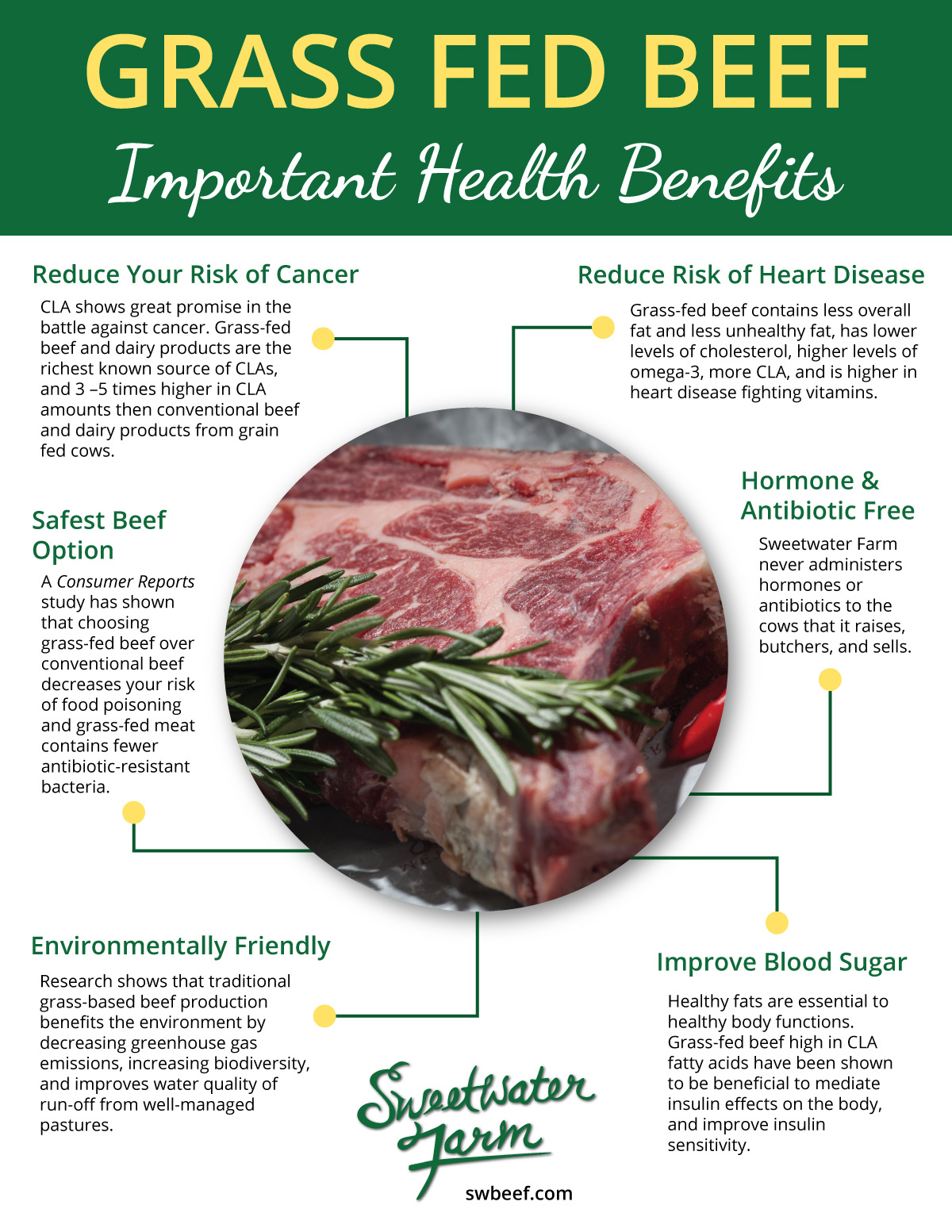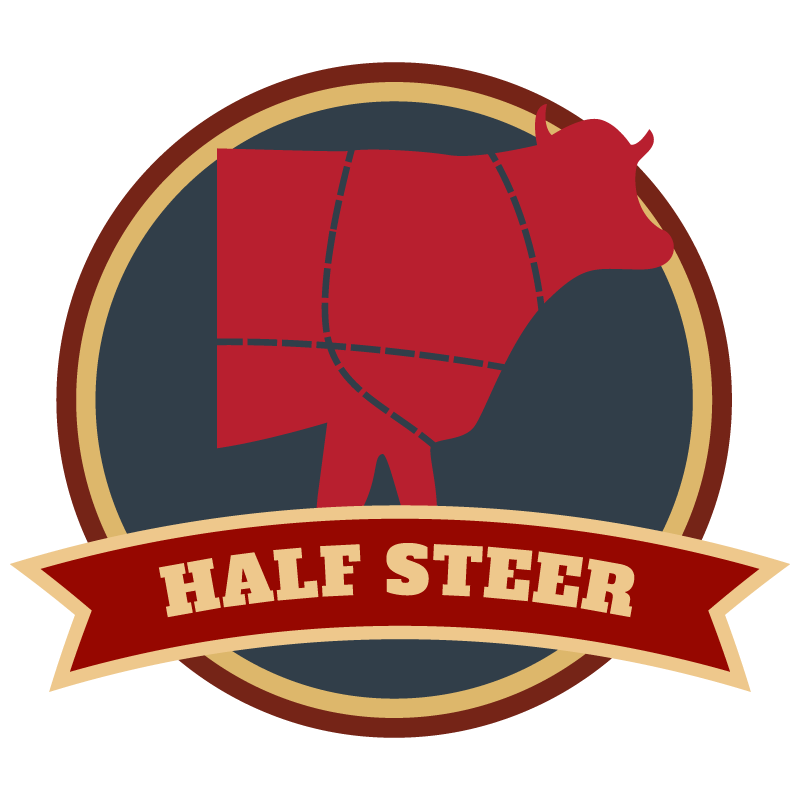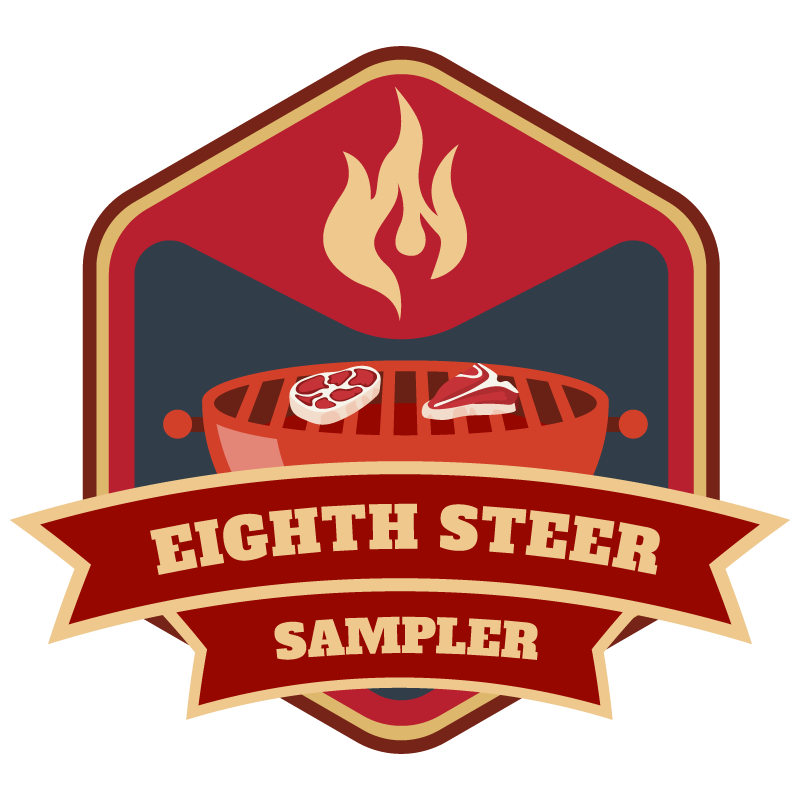
Summary of Important Health Benefits of Grass-Fed Beef
In 2007 the USDA established a standard definition for the “grass-fed” claim that requires continuous access to pasture and prevents animals from being fed grain or grain-based products.
In general, beef bought at a grocery store has been raised on a grain fed diet of corn and soy.
Cattle are smart eaters. They know what they need to eat better than we do. One study in Canada measured the nutrient value of grass collected randomly from the pasture compared to the grass the cattle selected for themselves. Researchers found, not surprisingly, that cattle consistently chose grass higher in protein and mineral content.
The greatest health benefits from grass-fed beef help fight cancer, heart disease, and obesity. Grass-fed beef is packed with heart healthy omega-3’s, and lower levels of harmful omega-6 fatty acids. It is also one of the richest known sources of anti-carcinogenic conjugated linoleic acid (CLA), and contains high levels of much-needed vitamin E. Additionally, grass-fed beef has been shown to help with blood sugar regulation, and is also less likely to be contaminated during meat processing. Last but not least, many grass-fed cattle, including Sweetwater Beef, are raised using no hormones or antibiotics.
Less Calories
Grass-fed beef has less fat than grain fed beef, and therefore also has less calories. The typical American consumes 66.5 lbs of grain fed beef a year. Switching to only grass-fed beef for one year would save the average person nearly 18,000 calories, or the equivalent of up to 6 lbs of weight loss.
Heart Health
Grass-Fed Beef is a rich source of Vitamin E, conjugated linoleic acid, and omega-3 fatty acids, all known to reduce the risk of heart disease. Eating grass-fed beef will also likely lower most folks’ cholesterol levels.
Healthy Fat Levels
British research showed a grass-fed beef diet resulted in a healthier ratio of higher levels of beneficial omega-3 fatty acids and lower levels of pro-inflammatory omega-6 fatty acids in volunteers.
Extra Omega-3s
These good fats are necessary throughout the body, and are vital for healthy blood pressure, cardiovascular health, and mental health including Alzheimer's, A.D.D., depression, and schizophrenia.
Grass-fed beef has 2 - 4 times more omega-3’s than a cow fed grain. This is because up to 60% of the fatty acids in grass are omega-3’s. Cattle removed from the pasture and finished at a feed lot have correspondingly lower levels of these good fatty acids.
Lower Omega-6
Omega-6 fatty acids are necessary for life, but the average American diet includes unnaturally high omega-6 levels from vegetable oils and grain fed meat and dairy products. Increased omega-6 levels have been linked to cancer, heart disease, and depression.
Conjugated Linoleic Acid - CLA
A powerful polyunsaturated fat in the human diet, there are really 16 different types of CLA responsible for a host of specific health benefits in the human body. CLA’s have been shown to be effective in the prevention and treatment of cancer, heart disease, obesity, and diabetes.
Grass-fed beef and dairy products are the richest known source of CLA’s, and 3 –5 times higher in CLA amounts then conventional beef and dairy products from grain fed cows.
CLA shows great promise in the battle against cancer. CLA has slowed tumor growth in animals, and in two European (Finland and France) studies women showing the highest levels of CLA in their diets had a significantly reduced risk of breast cancer.
Perhaps not coincidentally, animal derived CLA sources contain the appropriate dose for human consumption levels. A Utah State University study estimated that eating one daily serving of grass-fed meat, along with a glass of milk and an ounce of cheese from grass-fed cows, results in a reduced cancer risk.
Blood Sugar
Healthy fats are essential to healthy body functions. CLA fatty acids have been shown to be beneficial to mediate insulin effects on the body, and improve insulin sensitivity.
Vitamin E
Vitamin E has been linked with a reduction in heart disease and cancer in humans. Vitamin E deficiencies, on the other hand, show a connection to diabetes, Parkinson’s disease, immune disorders, and eye, lung, and liver diseases.
Grass-fed cattle, because of the high amount of vitamin E content in grass, have 4 times as much vitamin E as their feed lot counterparts. Vitamin E, which most Americans are deficient in, may also promote anti-aging properties.
Contaminated Meat
Cattle fed grain, instead of the natural grass diet that cows have evolved to eat, will have a highly acidic digestive system, and therefore be at higher risk for the growth of E. coli bacteria.
Research conducted by Consumer Reports showed that sustainably raised cows had about half the rate of meat contamination as conventional, feed lot cattle. Eating grass-fed beef substantially decreases your risk of food poisoning and has fewer public health risks.
No Hormones and Antibiotics
To increase yield feed lot cattle are injected with growth hormones, and often raised in crowded, unsanitary conditions that contribute to the spread of disease. Consequently, many cattle are treated with antibiotics, which ultimately contributes to antibiotic resistance in humans.
Score Ten for Grass-Fed Beef
Grass-fed beef is better for human health than grain-fed beef in ten different ways, according to the most comprehensive analysis to date. The 2009 study was a joint effort between the USDA and researchers at Clemson University in South Carolina. Compared with grain-fed beef, grass-fed beef was:
- Lower in total fat
- Higher in beta-carotene
- Higher in vitamin E (alpha-tocopherol)
- Higher in the B-vitamins thiamin and riboflavin
- Higher in the minerals calcium, magnesium, and potassium
- Higher in total omega-3s
- A healthier ratio of omega-6 to omega-3 fatty acids (1.65 vs 4.84)
- Higher in CLA (cis-9 trans-11), a potential cancer fighter
- Higher in vaccenic acid (which can be transformed into CLA)
- Lower in the saturated fats linked with heart disease
S.K. Duckett et al, Journal of Animal Science, (published online) June 2009, “Effects of winter stocker growth rate and finishing system on: III. Tissue proximate, fatty acid, vitamin and cholesterol content.”




